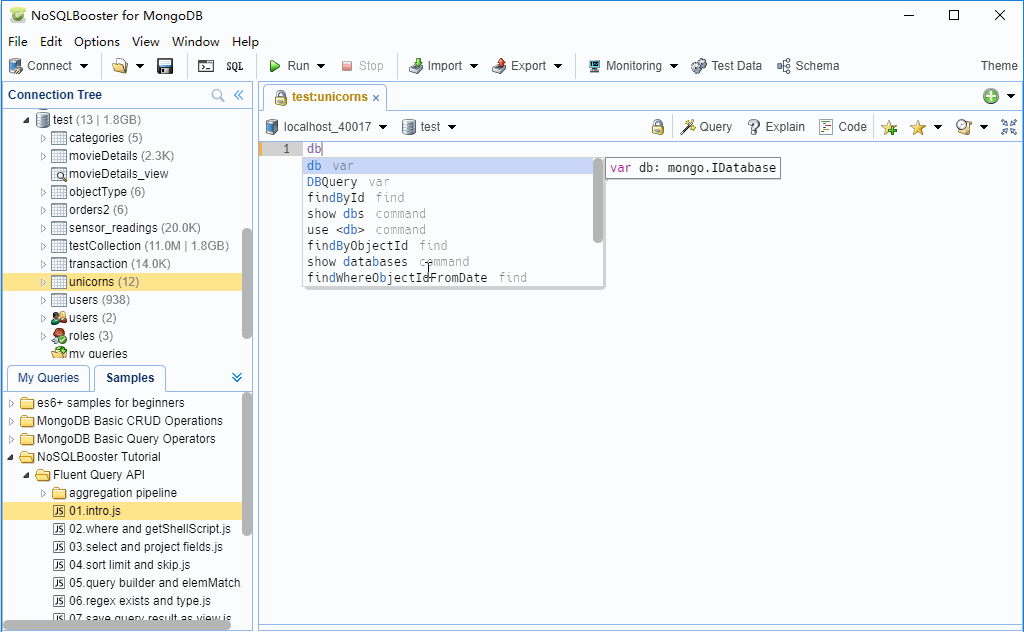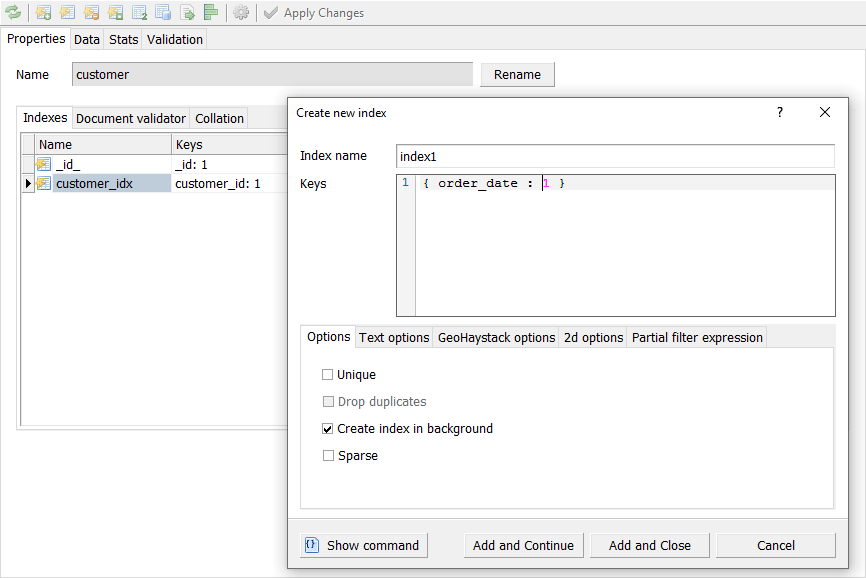

- Nosql manager for mongodb free install#
- Nosql manager for mongodb free full#
- Nosql manager for mongodb free plus#
- Nosql manager for mongodb free free#
Migrating to AWS Dynamo DBĪmazon offer migration guides to migrate to DynamoDB from other database engines including MongoDB, Cassandra, MySQL, plus they offer the Amazon Database Migration Service tool to simplify migrating to Dynamo DB.

Nosql manager for mongodb free free#
This pricing model works best for predictable or consistent application traffic, and may work out more cost effective for users who are able to accurately forecast demand.ĪWS Dynamo DB is available on the AWS Free Tier, meaning users can experiment with building their first DynamoDB tables at no cost. Provisioned Capacity Mode – user specify the number of reads & writes per second that their application will require. This pricing model works best for unpredictable application traffic, but ultimately may be more expensive. On-demand Capacity Mode – users don’t need to specify how much read & write throughput they expect from their application as DynamoDB instantly scales up or down to accommodate workloads.
 Security – all data encrypted by default, granular identity and access control on all tables.ĪWS have 2 pricing models for DynamoDB – users are charged for reading, writing and storing data in Dynamo DB tables.
Security – all data encrypted by default, granular identity and access control on all tables.ĪWS have 2 pricing models for DynamoDB – users are charged for reading, writing and storing data in Dynamo DB tables. 
Autoscaling – scales up and down to handle load spikes.
Nosql manager for mongodb free install#
Serverless – no servers or database software for customers to provision, install and manage. Low latency – single digit millisecond data access at any scale, anywhere in the world. Common use cases vary by industry, but include: It is a multi region and multimaster database deployment which can scale to handle tens of millions of request per second.Īpplications include mobile, web, gaming, ad tech, retail and IoT. DynamoDB includes security, backup & restore and in-memory caching. Large enterprise investment in existing relational databases.ĪWS DynamoDB is a fully managed proprietary Key-Value and Document NoSQL database that can deliver single digit millisecond performance at any scale. Ever uploaded a photo to social media, only to find you can’t view it for a while? It’s more than likely due to the inability to read data that has not yet been synchronized across all database nodes. Barriers to NoSQL adoption include: No SQL databases generally compromise consistency of writes/reads with availability and speed. But they differ in that every record in a relational database has the same sequence of fields, whereas documents in a collection can have an array of different fields. Collections are similar to tables on a relation database, and documents similar to records. Documents can be grouped using Collections, Tags, Metadata or directory hierarchies. Each document has a unique ‘key’ to identify it. Document – data is encapsulated in a ‘document’ which is a standard format or encoding, eg XML, YAML or JSON. In the graph world these relationships are more important than the individual nodes or data points. For example, 2 nodes ‘mammal’ and ‘whale’ would have the relationship ‘is a type of’ pointing from ‘ whale’ to ‘mammal’. A node represents an entity, and a relationship represents how 2 nodes are associated. A graph is composed of 2 elements – a node and a relationship. Graph – focuses on the relationships between data. A wide column store can be interpreted as a 2 dimensional key-value store. Wide Column – uses tables, rows and columns like in a relational database, but unlike a relational database, the names and formats of the columns can vary from row to row in the same table. Key-Value Store – data is represented as a collection of Key-Value pairs – an attribute name and a value, eg or. These are the most common data structures used by NoSQL databases: Data Structures are more flexible & make some operations faster. Easier horizontal scaling to clusters of servers. The advantages of NoSQL over relational databases include: NoSQL databases are often used in big data and real-time web applications. A NoSQL database is a mechanism for storing data that is not structured in the same tabular format as a relational database. Nosql manager for mongodb free full#
You can find a full description on Wikipedia, but let me summarize here. Each of course has their advantages and disadvantages – your choice is likely to be guided by your long term cloud strategy and the specific requirements of your application.įirst up, what exactly is NoSQL? What is a NoSQL Database? We’ll take a look at what NoSQL actually means, then examine the 2 different offerings, looking at the pros & cons of each. In this post we explore 2 giants of the NoSQL Database world – DynamoDB from Amazon Web Services, and MongoDB.








 0 kommentar(er)
0 kommentar(er)
